Chicken
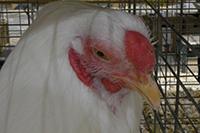

All the different breeds of chickens today can trace their origins back to the Red Jungle Fowl of East Asia.
Through generations of genetic seleciton, specialized breeds have been developed for meat (broilers) and eggs (layer). There are also dual-purpose breeds that are reasonably good in both meat and egg production, but not as good as the specialized breeds. There are also breeds develop strictly for exhibition.
Vocabulary
- Chicken is singular; chickens is plural
- Chick = young (baby) chicken
- Pullet = immature female chicken
- Cockerel = immature male chicken
- Hen = adult female chicken
- Cock/Rooster = adult male chicken
- Capon = castracted male chicken (requires surgery since the reproductive organs are internal)
Note: Some people incorrectly believe that 'chicken' is the plural form of chick, as oxen is to ox. This is not the case - The word comes from the Anglo-Saxon word cicen, for which the plural is cicen-u. "Chick" is simply a contraction of chicken. Chicken can also refer to the meat coming from the bird so it is okay to say "I eat a lot of chicken" rather than "I eat a lot of chickens," which would change the meaning somewhat.

A common question is "How can you tell the difference between a male and female chicken?" In the photo the male (rooster) is the chicken on the left and the female (hen) is the one on the right. Notice the difference in the size of comb and wattles and the tail feathers. Males have a larger comb and wattles. Their tail feathers are pointed while those of the female are rounded. In addition, males crow while females do not.
- Bantam = chicken breed that is one-third to one-half the size of a standard breed. There are several breeds which have both standard and bantam breeds. There are also banta-only breeds
- Bantie = non-technical term sometimes used in place of 'bantam'
- Biddy = nontechnical term for a laying hen that is over one year of age
- Broody = a hen that is sitting on eggs (hers or someone else's) with the intent of hatching them
- Chicken tractor = portable cage for chickens on pasture. The chickens are allowed to scratch for bugs and weeds and to fertilize the area with their manure, and then they are moved to fresh pasture.
- Chook = Australian term for chicken. It has been used in the U.S. for chickens in a small flock.
- Cull = to remove a chicken from the flock because of productivity, age, health, or personality issues (i.e., overly aggressive or timid, egg eating, etc.)
- Mounting = term for when a rooster mates with a hen
- Peep = term for chick sometimes used by small flock owners
Chicken trivia: About 4 million pounds of feathers are produced each year by the U.S. poultry industry. Ever wonder what happens to all these feathers?
There are different types of combs including:
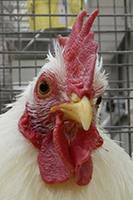
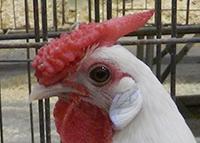

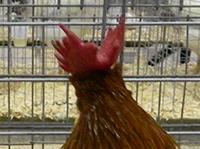

Other combs include the pea comb and the strawberry comb.
A common question is "How can you tell the difference between a male and female chicken?" There are distinct differences in adult chickens (known as sexual dimorphism) related to comb and wattle size, size of spurs, and type and shape of feathers.
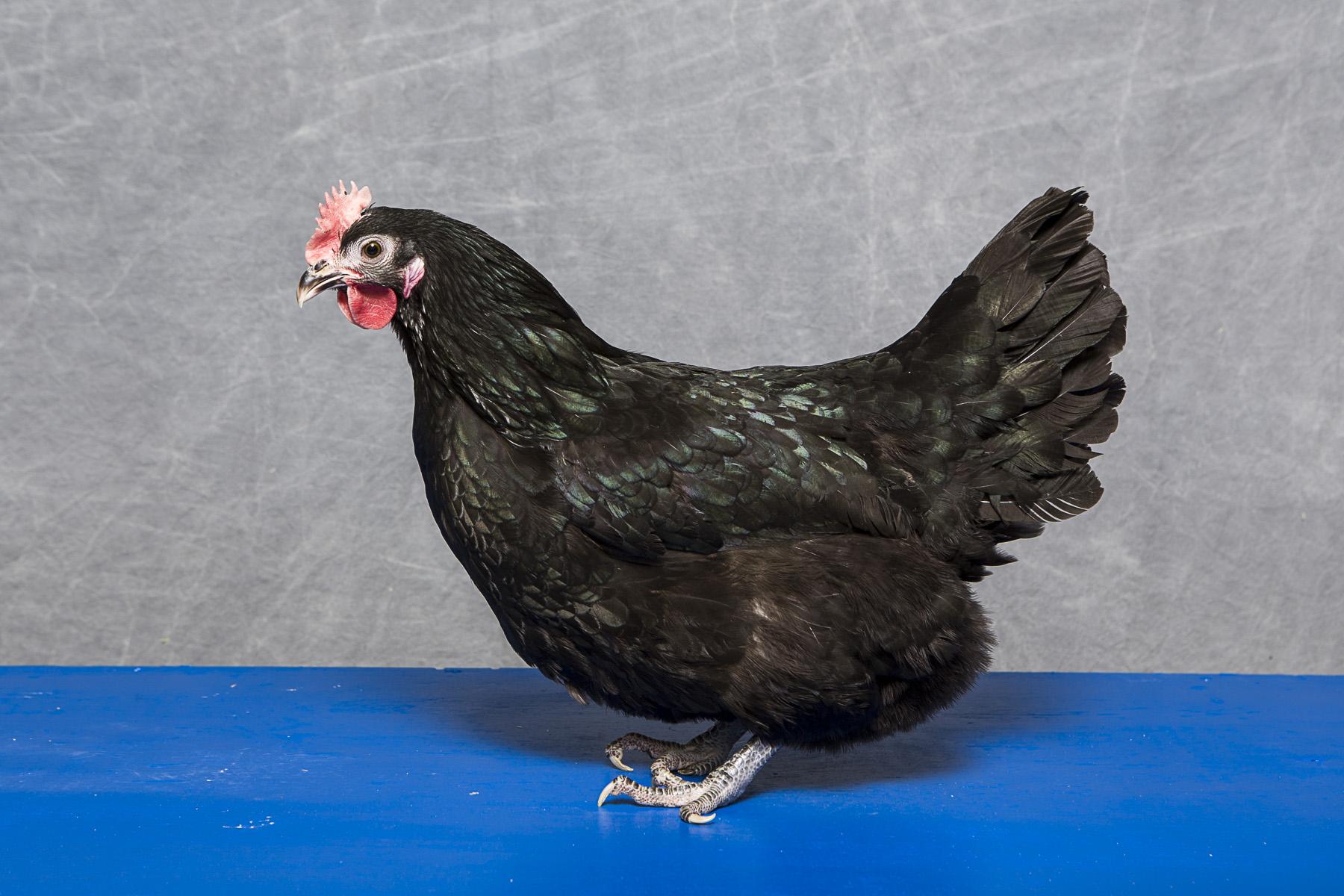
Female Black Australorp
- Smaller comb and wattles
- Smaller spur
- Hackle feathers are more pointed
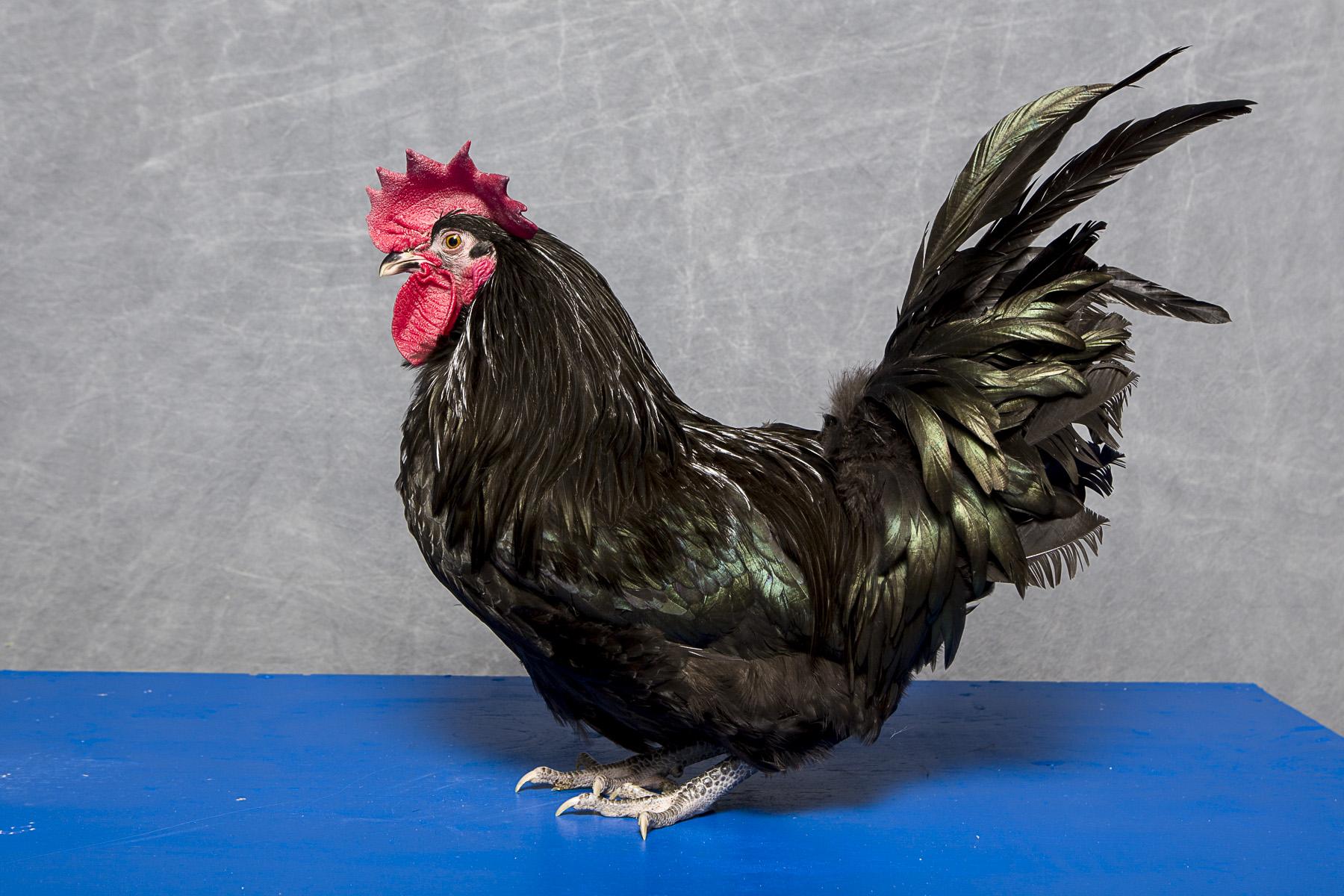
Male Black Australorp
- Larger comb and wattles
- Larger spurs with size varying by age
- Hackle feathers are longer and pointed
- Has long, pointed sickle feathers that cover the main tail feathers
- Has long, pointed saddle feathers over the back
It is much harder to sex young chicks, especially at hatch.
